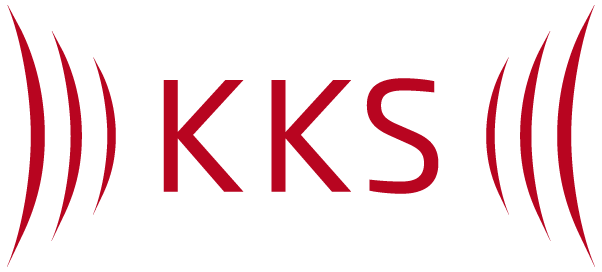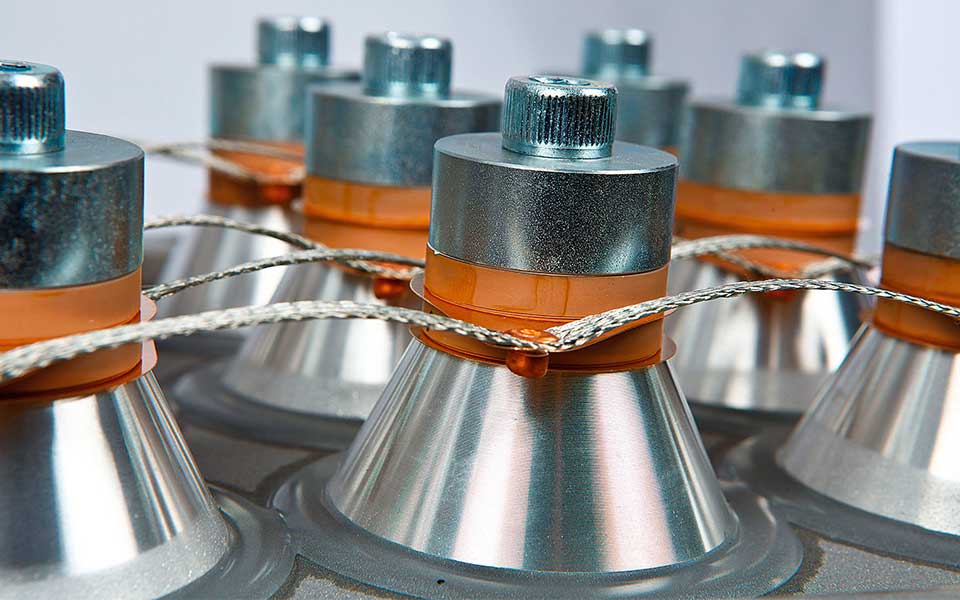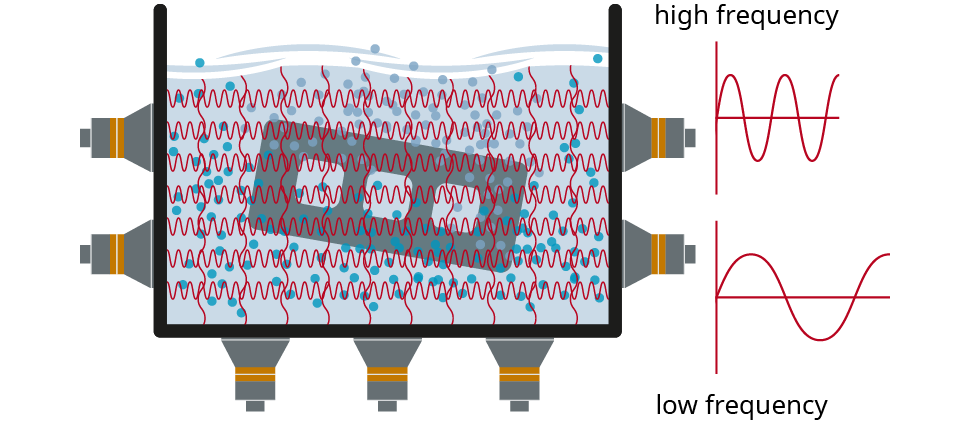Flawless cleaning results by use of KKS ultrasonic components
KKS is the first place to turn for the application-oriented, cost-effective use of ultrasonic technology. We also use our KKS ultrasonic components in our ultrasonic systems and in standard and customized installations. Highest quality is our promise. For decades our customers have trusted and relied on the performance of our ultrasonic components. Leading companies from a wide range of industries have chosen the KKS ultrasonic technology as their state of the art in cleaning technology.
KKS SINGLE, DUAL or MIX frequency technologies combined with our cleaning solutions make ultrasonic cleaning an efficient and at the same time environmentally friendly method. KKS system solutions provide the highest performance, ensuring maximum cleanliness, operational reliability and durability, plus cost-effectiveness.
Ultrasonic cleaning is a very effective and gentle process for intensive cleaning of many kinds of workpieces, finely structured, porous and open-pored surfaces and the most complex geometries in the shortest possible time without extra manual work and without causing damage. Hence, ultrasonic cleaning is the first choice for achieving very clean surfaces. The range of applications for ultrasonic components extends from cleaning the smallest parts in microelectronics and optics to medical implants and large-volume parts in industry. For these reasons, ultrasonic aqueous cleaning is the gold standard wherever the strictest cleanliness and environmental protection standards have to be met.
Ultrasonic technology – our expertise
- Comprehensive advice on efficient and effective use
- Flexible in-house production for optimal solutions in the shortest possible time
- Innovative, cost-effective systems for seamless application: generators / transducers / equipped tanks
- All ultrasonic components are available with SINGLE and DUAL frequency technology at 27 & 80 kHz / 30 & 60 kHz / 40 & 100 kHz
- Cost-effective thanks to durable systems and high performance
Ultrasonic components from KKS – a wide and versatile range of applications
DUAL or MIX frequency ultrasonic technology
Using sequential or simultaneous ultrasonic treatment at two harmonic frequencies, such as 27 kHz and 80 kHz, excellent cleaning results can be achieved in relatively short processing times.
DUAL or MIX frequency technology has proven to be one of the most efficient and effective ultrasonic cleaning methods. Comparisons and tests have confirmed these findings: the combination of coarse and fine cleaning in the same ultrasonic tank increases flexibility and excellent cleaning results can be achieved.
At low frequencies (coarse cleaning), fewer, but larger cavitation bubbles with high implosion force are produced. The complex dirt layers are blasted off and the surface structure is enlarged.
At high frequencies (fine cleaning), on the other hand, many more but smaller cavitation bubbles form with lower implosion force but higher flow velocity. These smaller cavitation bubbles ensure that impurities are also effectively removed from porous surfaces, open-pored structures and the tiniest holes and delicate structures. Thanks to the DUAL and MIX frequency oscillation systems, coarse and fine cleaning can be carried out simultaneously with ultrasonics in the same bath.
KKS DUAL frequency oscillation systems
Developed by KKS and manufactured to the highest quality standards.
- For maximum efficiency
- Individually adapted dimensions and geometries
- Ultrasonic membranes in thicknesses of 2/3/5 mm
- Vacuum-compatible versions
- Duplex stainless steel membrane material
KKS MIX ultrasonic technology
With MIX ultrasonic technology, the oscillation elements on the tank wall are powered at a different frequency to those on the tank bottom. Simultaneous ultrasonic treatment at two harmonic frequencies, such as 27/80 kHz, 30/60 kHz and 40/100 kHz, allows excellent ultrasonic cleaning results to be achieved.
Qualification of ultrasonic technology through cavitation measurement
At KKS, ultrasonic efficiency is qualified by measuring cavitation behavior in the cleaning media. The measurement method specified by the IEC (International Electrotechnical Commission) under IEC TS 63001 is used to measure the components relevant to the cleaning effect.
KKS uses a Cavispector, a measuring method with analysis software that employs a hydrophone to document cavitation noise with physically based, time-independent and quantifiable measured values. The cavitation noise level (Lcn) and the temperature are measured at full power in the aqueous medium and documented as a reference measurement in a measurement report. The cavitation behavior can be verified in consultation with the customer by periodic measurements (for example every six months) during operation of the ultrasonic cleaning system.





